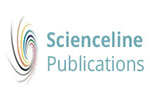(2024) Polymorphism of Growth Hormone (GH/HaeIII) Gene and Its Association with the Performance of Merino Cross Rams. World's Veterinary Journal. pp. 151-157.
|
Text
WVJ14(2) 151-157, 2024.pdf - Published Version Download (375kB) |
Abstract
Merino cross sheep (75 Merino × 25 Garut) are introduced by the government of Indonesia for meat production purposes. The present study aimed to determine the polymorphism in the exon 2 region of the growth hormone (GH) gene (422 bp) in Merino cross rams using the PCR-RFLP technique and to analyze its relationship with body weight and body measurements of the rams. A total of 145 rams aged one-year-old with an average body weight of 29.08 ± 7.96 kg from the breeding station in West Java, Indonesia were considered as the experimental animals. It was indicated that a missense mutation of c.55G > A (p.G19S) was detected in the target sequence of the GH gene in Merino cross rams. The PCR-RFLP analysis in the GH gene of Merino cross with HaeIII restriction enzyme (GH/HaeIII) was observed in a moderate category with a polymorphic informative content (PIC) value of 0.22. Therefore, the G allele was more frequent than the A allele (0.85 versus 0.15). Furthermore, the genotype AA was not present among the sheep that were part of the study. However, the polymorphism of p.G19S was found to have a significant association with birth, weight, and chest depth measurement in one-year-old Merino cross sheep. However, the GH/HaeIII gene in Merino cross rams exhibited polymorphism, primarily with two genotypes: GG (wildtype) and GA (carrier). The G allele was identified as the dominant allele in the ovine GH gene, occurring with a frequency of 0.85. Importantly, the polymorphism of the GH/HaeIII gene was significantly linked to birth weight and chest depth in one-year-old Merino cross rams. These findings provide preliminary insights that could potentially aid in the early stages of molecular selection for Indonesian Merino cross sheep. Open Access: This article is licensed under a Creative Commons Attribution 4.0 International License, which permits use, sharing, adaptation, distribution and reproduction in any medium or format, as long as you give appropriate credit to the original author(s) and the source, provide a link to the Creative Commons licence, and indicate if changes were made. The images or other third party material in this article are included in the article’s Creative Commons licence, unless indicated otherwise in a credit line to the material. If material is not included in the article’s Creative Commons licence and your intended use is not permitted by statutory regulation or exceeds the permitted use, you will need to obtain permission directly from the copyright holder. To view a copy of this licence, visit https://creativecommons.org/licenses/by/4.0/. © The Author(s) 2024
| Item Type: | Article |
|---|---|
| Keywords: | Article; birth weight; body weight; experimental animal; female; gene; gene frequency; gene targeting; genotype; GH gene; Indonesia; male; Merino cross ram; missense mutation; nonhuman; physical performance; polymerase chain reaction restriction fragment length polymorphism; ram (sheep); single nucleotide polymorphism |
| Subjects: | S Agriculture > SF Animal culture |
| Divisions: | World's Veterinary Journal (WVJ) |
| Page Range: | pp. 151-157 |
| Journal or Publication Title: | World's Veterinary Journal |
| Journal Index: | Scopus |
| Volume: | 14 |
| Number: | 2 |
| Identification Number: | https://doi.org/10.54203/scil.2024.wvj19 |
| Depositing User: | Dr. Alireza Sadeghi |
| URI: | http://eprints.science-line.com/id/eprint/1203 |
Actions (login required)
 |
View Item |


 Dimensions
Dimensions Dimensions
Dimensions